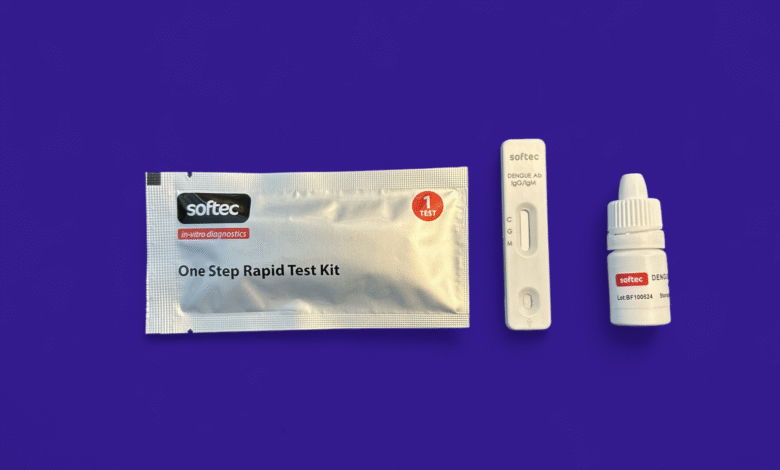Navigating the Body, Diagnosing the Tropics: Tools at the Frontline of Medicine

In the current healthcare environment, proper diagnostics is more important than ever before- particularly as healthcare professionals face an ever more complex set of diseases to treat in a resource diverse environment. Whether it is the complex navigation that is needed to visualize internally or the quick identification of infectious agents in tropical weather, accuracy and speed are the hallmarks of good patient care.
Technologies like the bending section for endoscope and the tropical infection disease test kit represent key advancements on two different but equally essential fronts of modern medicine.
One examines the inner architecture of the human body, and the other one rapidly detects the harmful pathogens. The two are a critical diagnostic pair in hospitals and clinics worldwide.
The Bending Section of an Endoscope: Precision in Tight Spaces
Endoscopy has been a revolution in diagnostics and treatment planning, and the minimally invasive procedures. The most important part of this medical miracle is the bending section of endoscope. This part is constructed in the most flexible way and is located at the distal end of the insertion tube, allowing clinicians to move through the narrow, tortuous body passages.
In the case of the gastrointestinal tract, respiratory system, and urinary pathways, the functionality of the bending section will define the possibility of the clinician to access target areas safely and effectively. This component is designed with articulation wires, directional knobs, and high-tensile sheaths to make sure that the endoscope moves in any direction in a responsive manner. Its agility enables medical personnel to maneuver around organs, sensitive tissues, and reach zones that were not accessible before, all the time taking high-resolution images or taking biopsy samples.
In the absence of this important part, endoscopic instruments would not be able to move freely to perform precise internal examinations, which would compromise the diagnostic understanding and expose the patient to danger. Its mechanical accuracy has a direct impact on more informed treatment decisions.
How Flexible Design Enhances Internal Imaging and Biopsies?
Bending section of the endoscope is not only a matter of navigation, but it is a matter of translating movement to precision. Its flexible design allows real-time imaging and targeted sampling which are vital in diagnosing internal diseases like ulcers, tumors and internal bleeding. The newest design features are multi-angle articulation, 3D motion feedback, and improved torque transmission, which enable clinicians to have precise control in anatomically limited settings.
The quality of internal imaging is based on the capacity of this section to maintain its shape and restore a neutral position without deforming the neighboring anatomy.
Materials that are braided with reinforced polymers or stainless steel offer perfect structural strength. Such materials can easily resist repeated bending without damaging the internal component of the endoscope.
In such procedures as gastrointestinal endoscopy or bronchoscopy, where access points are few and internal structures are delicate, the design and responsiveness of the bending section can have a significant effect on the diagnostic results. As an example, in endoscopic biopsies, the possibility to keep the stable field of view and guide instruments through the working channel allows performing the accurate tissue extraction and reducing the risk of trauma or incomplete sampling.
Tropical Infection Disease Test Kits: Detecting Threats Early
While endoscopes allow clinicians to look inside the body, the tropical infection disease test kit helps detect some of the world’s most dangerous pathogens from a blood, saliva, or urine sample. The kits are vital in the diagnosis of such diseases as dengue, Zika virus, chikungunya, malaria, and yellow fever, which are common in tropical and subtropical areas.
Speed and accuracy are critical in areas with poor infrastructure and high burden of the disease. These test kits are point of care diagnostics, meaning that they allow health workers to provide fast and actionable results without the complex laboratory infrastructure. The majority of kits are immunochromatographic assays (lateral flow tests) that are simple to perform and provide results within 30 minutes.
Outbreak control depends on the use of tropical disease test kits. The early detection enables the immediate isolation of the patient, treatment, and contact tracing, which are essential in the prevention of the spread of infectious diseases. These kits become the first and in many cases the only line of defense against widespread transmission in locations where laboratory facilities are limited.
Moreover, the development of diagnostics of tropical diseases has led to the fact that these kits are becoming more sensitive, specific, and easier to use. Most of them can now identify several pathogens using one sample, thus simplifying the testing process and saving resources. There are even smartphone-compatible kits, with the possibility of tracking results in the cloud and epidemiological reporting.
In the end, the presence and adequate application of these diagnostic tools lead to a decrease in mortality, a decrease in a burden on healthcare systems, and healthier communities. They are invaluable resources in mass health promotions and in one-on-one clinical practice.
Combining Imaging and Testing for Accurate Diagnoses:
The best way to use diagnostics is to combine visual and laboratory knowledge. For conditions like parasitic infections, gastrointestinal diseases caused by tropical pathogens, or hepatobiliary complications resulting from endemic illnesses, combining the bending section for endoscope with a tropical infection disease test kit enables a multi-angle approach to diagnosis.
As an example, a patient in a tropical area with abdominal pain, fever, and nausea may be considered to have a parasitic infection or bacterial gastroenteritis. The ability to bend accurately would allow endoscopic imaging to show ulcers or lesions, and a tropical disease test kit could either confirm or exclude infections like amoebiasis or typhoid fever. This two-way system can greatly prevent misdiagnosis, timely intervention and unnecessary treatments.
In severe situations, like hemorrhagic fevers with gastrointestinal manifestations, endoscopy assists in visualization of internal bleeding, and rapid test kits determine the source of the virus. Internal imaging combined with molecular detection provides clinicians with a more complete and precise image, which is essential when it comes to rapid progressing diseases.
Moreover, such technologies facilitate interdisciplinary medical processes. Whereas laboratory workers perform and interpret test kits, gastroenterologists and internal medicine experts use real-time endoscopic images to develop treatment plans.
Conclusion:
The world of health is evolving at a very fast pace and the medical workers need to be provided with the tools that will address a broad scope of diagnostic requirements. From the bending section for endoscope enabling safe, detailed internal exploration to the tropical infection disease test kit allowing rapid detection of life-threatening pathogens, both innovations demonstrate how targeted design leads to better outcomes.
These diagnostic tools do not only supplement each other. They become mutually dependent in most situations where accuracy and time are mutually exclusive. With the healthcare systems of the world getting increasingly more powerful in terms of their diagnostic abilities, it will be important to blend mechanical perfection with biomedical innovation.




